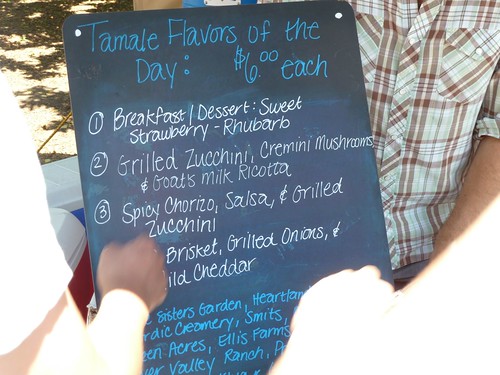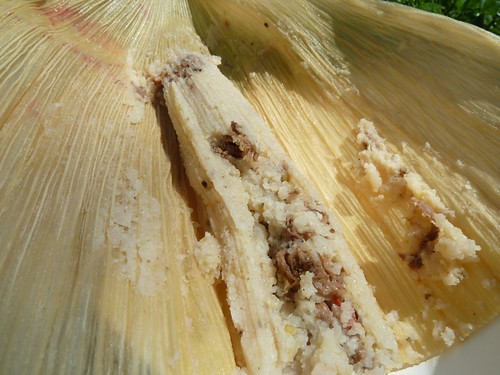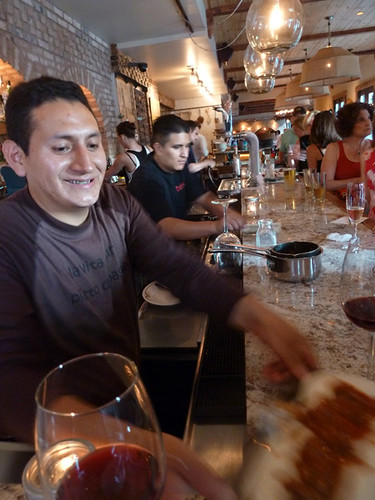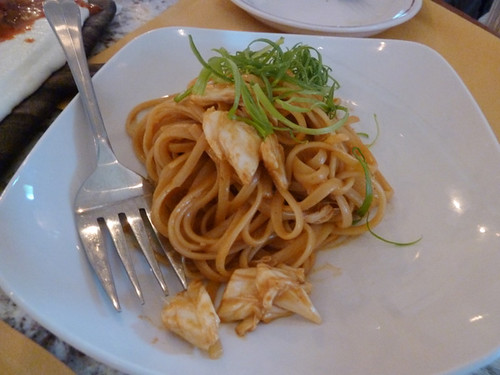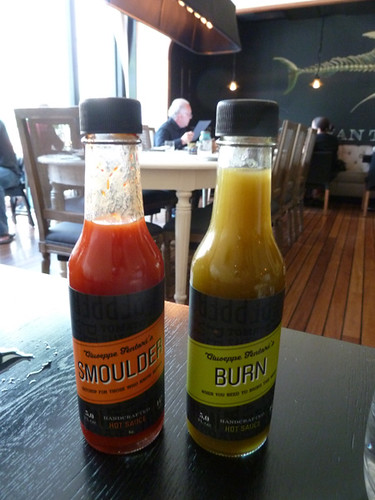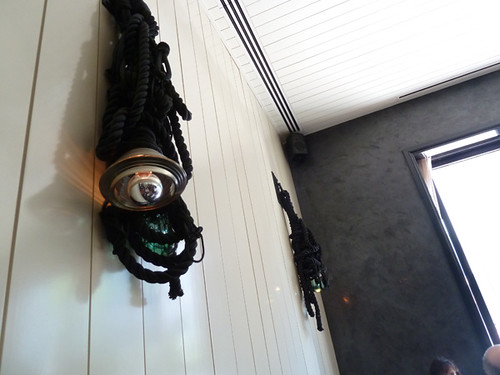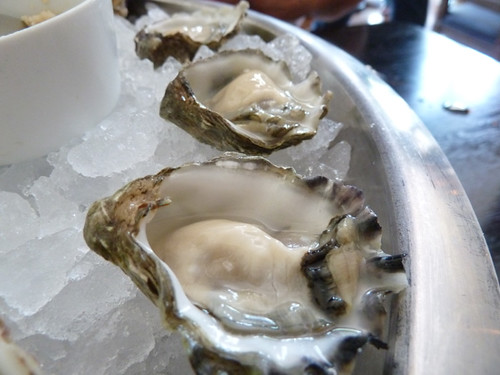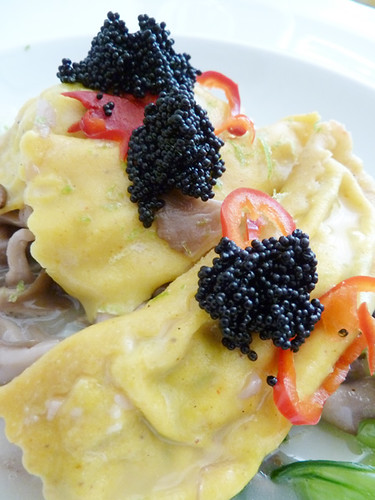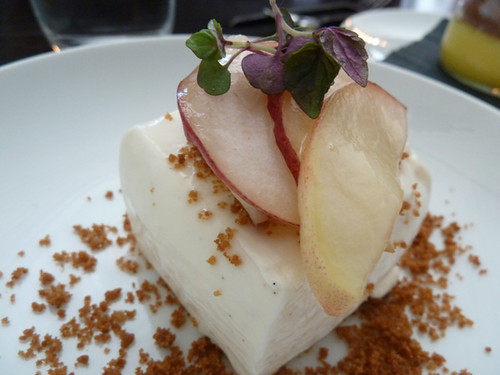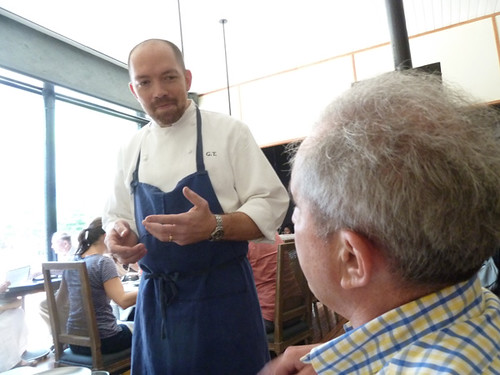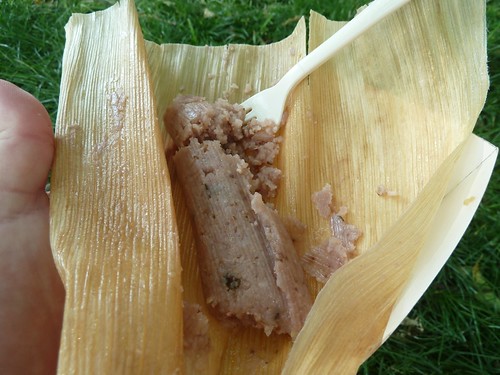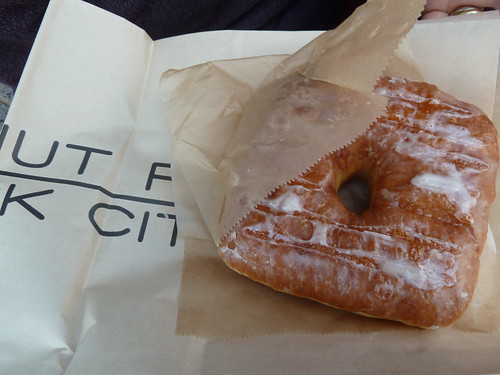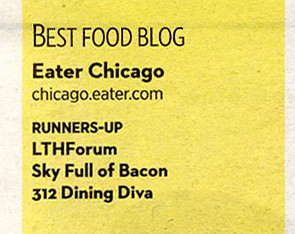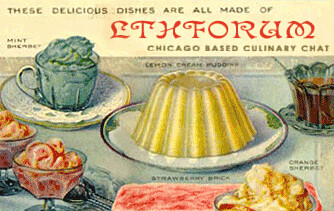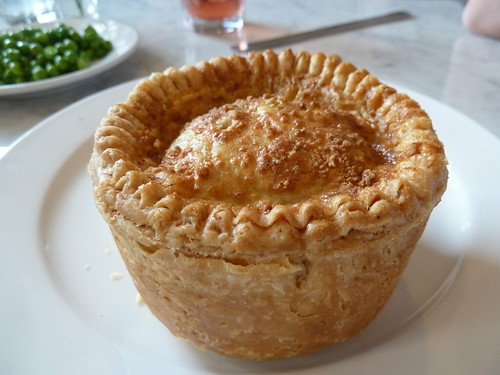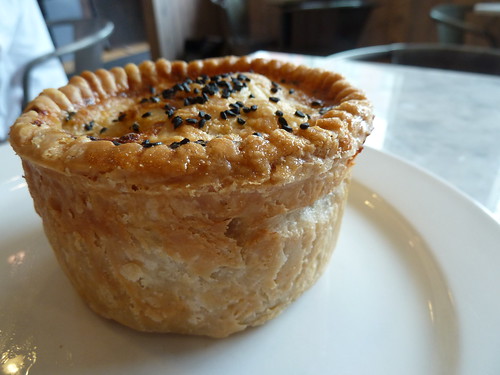Two return visits:
I liked some of the things I had at Chizakaya, but was pretty sure one dinner there would do me. For one thing, it was a “small plates” place where the plates were so small that I had to eat most of the menu to be full, so there were few surprises left for a return visit. For another, I basically came out of that meal feeling that it wasn’t a serious way to eat— that I had noshed all evening on silly stuff (the scraps of chicken skin for $3 silliest of all) and had never eaten what a grownup would recognize as food.
But Mike, you say, you ate things on sticks at that yakitori place in New York and you loved it. What’s the difference? Good question, and I’m not sure why I can rave about one and feel so dubious about the other. I guess part of it is context— Yakitori Totto feels like a real Japanese bar, and we ate things real Japanese barflies ate, while Chizakaya feels like another Lakeview concept, and at some point I just wanted them to quit goofing on Japanese junk food and make a real plate of something. One dish that really felt like Japan in a bowl would have done the trick, maybe, but instead it was just greasy stuff on sticks all night. Tasty, some of it, but I didn’t respect it, or me, in the morning.
Then Michael Nagrant invited me to go try lunch there, lunch being focused on ramen and other soups or so the email from Tasting Table suggested (actually, it appears that they’ll pretty much make you anything on their menu at lunch, and the soups are just as available at dinner). We ordered two. One is based on oden, which is a broth with lots of things like fish balls to pick up and eat; this was sort of oden turned into a soba noodle soup, more noodles and broth, fewer things to pick up:

Mostly, this tasted like your typical udon soup, but there was a woodsy-buckwheaty note to it that was a little deeper and more evocative than the sweet, soy-broth flavor you usually get. For a few bucks more than, say, the udon at Mio Bento, it’s an upgrade, if not a radically better one.
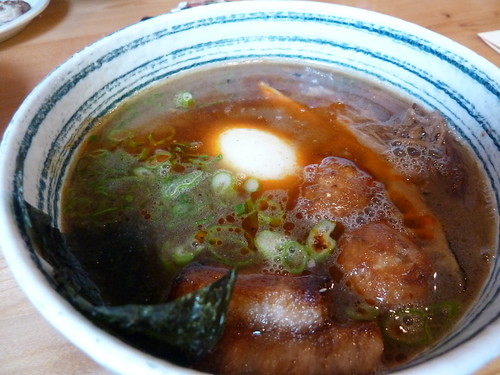
The ramen was another story. Unlike some of my friends, I haven’t been to any of the hyperauthentic ramen places in L.A. or anywhere that have been scouted out by ramen bloggers, so if I say that this is the best ramen I’ve ever had, that’s not an opinion with a depth of experience behind it. But it was the best ramen I’ve ever had, the first ramen with the porky funk and the largeness of soul to make me understand why people wax so poetic about a noodle soup— why this is a dish capable of profundity. The organ-meaty funkiness of the broth and the velvety smoothness of the noodles, not to mention the sweet-salty porkiness of the slab of pork belly or two hidden in it, all made this a richer experience than I’d ever expected ramen to be. So Chizakaya, written off as lightly likable some months back, turns out to have more to it after all.
* * *
Nagrant had just been to the recently refurbished NoMi in the Park Hyatt, now under Chef Ryan LaRoche (who had been in the kitchen for a couple of years under longtime chef Christophe David), and I was going that night (with my wife, as guests of the restaurant <–disclosure), so I was eager to hear about his experience. He was impressed with LaRoche’s menu, which within the constraints of hotel dining (after the fancy exotic stuff, there’s a page devoted to plain cooking, for those who just want a steak or lobster) he felt was daring and inventive. He was less impressed with a service experience that left him worried that a top-drawer restaurant had gone too casual for its place in the world. (See the next issue of Chicago Social for more details, I guess.)
My only experience with NoMi was this special dinner, which gave a nice picture of the expertise in the kitchen but clearly not of everyday dining there. But at least it meant I had context for how the renovation, if not radically changing the space, had taken it from a borderline-sepulchral high end art museum feel to a jazzier 60s fantasy-airport lounge look. The kitchen was now open to the room, with a busy raw bar at one end and the de rigueur hood ornament of the modern kitchen, the red Berkel slicer, right out in the room:
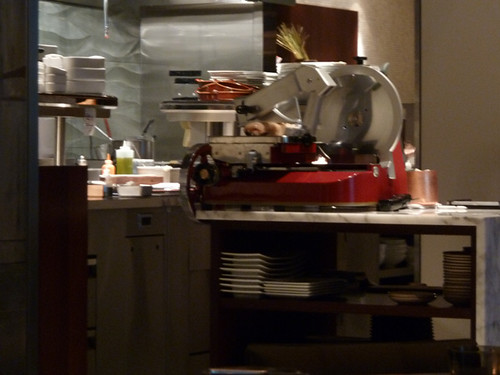
LaRoche’s past experience includes Tru and L’Atelier Robuchon, but from his menu, he seems pretty eclectically devoted to most of the major virtues you want to see on a menu right now. There was housemade prosciutto as well as an unabashed shoutout to Benton’s Country Ham on the menu, while asparagus, rhubarb and especially peas all played prominent roles on the menu at this moment. The first thing we had, the unassumingly named “avocado toast,” was the kind of combination that could provoke a loud WTF?, prosciutto and creamy uni, sea urchin:
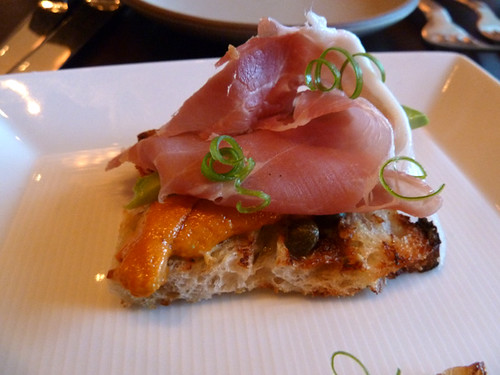
The first bite I had, unfortunately, tasted only of the spicy mustard on the toast, but the next bite delivered all the promise of the dish— saltiness coming not from the sea creature but from the ham, a lushly gooey mouthfeel with just the cleanest hint of the sea coming from the uni… score one for the bizarre-sounding combination, with bonus points for the fact that my wife, who I’m sure has never gulped down a slimy-looking uni shooter like I have, ate one of sushi’s best-known dare foods without even knowing it was anything to be grossed out by.
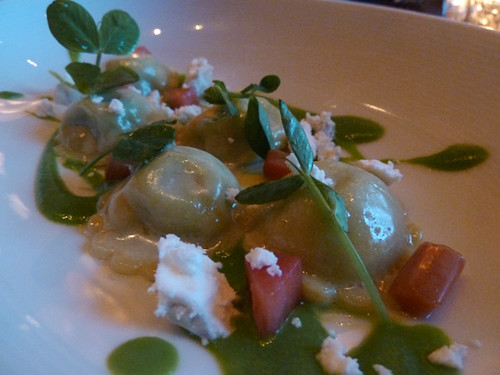
A salad with more of the prosciutto and chili-tinged shrimp seemed less inspired, but some pea ravioli with feta and little bits of pickled rhubarb was exactly the ultra-light spring dish you should have at this moment. Then there was our entree— the $75 chicken, which has drawn comment from several who have looked at the new menu. We ran into sommelier Aaron Sherman (whom I first met some years ago at Avenues) on the way out, and he said one of the things they had done with the wine list was thin out the most extravagant and absurdly expensive things on it— but still, if you have a need to drop $2200 on a bottle of Romanee-Conti, a reason why your business would be best served by spending that money, it’s on there.
Likewise, the menu has three increasingly extravagant shared dishes— a whole chicken, a whole lobe of foie gras, and a whole steer— no, not quite, but some crazily huge hunk of beef, on an ascending scale from $75 to, I think, $190. Nagrant had goaded me to at least find out what could make the chicken worth $75— especially since it comes from T.J.’s at the Green City Market, from whom I’ve bought many things including a few Thanksgiving turkeys. I’m sure their chicken is as good a candidate as any to be glorified into a $75 chicken, but what happens between the market and my plate that makes it into such a remarkable beast?
Yet $75 for two was really not more than any other pair of entrees, so we didn’t feel that we were sticking the hotel too rapaciously by ordering it and finding the answer to the mystery of this chicken. Well, in short, if they have trouble getting people to pay that for it, maybe they can have it underwritten by the American Sous-Vide Equipment Manufacturer’s Association, because it was a marvelous advertisement for the ability of sous vide cooking to turn out meat that is uniquely velvety, sensuously soft and delicate. There was a truffle sauce poured over the top, surely helping sell the price, and it sat on a vegetable “marmalade” (which I take to mean, cooked long enough to develop their sweetness; it certainly wasn’t jam-like), but really, all that chicken needed was its own meltingly soft and silky self to wow you and leave you making little gurgle noises of enchantment. It was certainly the best fine-dining chicken I can recall having… since the last time I dropped a wad to get a chicken just to see what made that chicken worth so much more than other chickens, a poulet Bresse at Alain Ducasse in Paris.
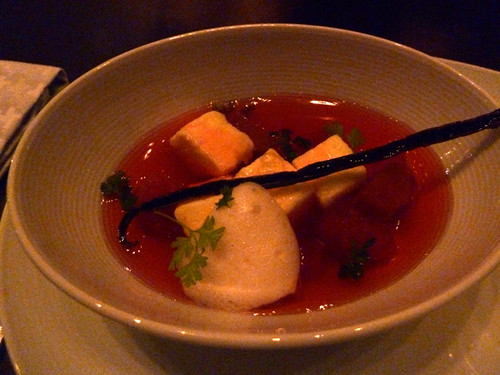
The new pastry chef is Meg Galus, who came over from Cafe des Architectes. I have to say I respected the desserts more than I loved them. Actually, I liked mine, a rhubarb soup with ginger marshmallows and lemon gel in it, a lot; light, imaginative… it’s just it’s the sort of thing that should be a small shooter on a tasting menu. Working my way through an entire bowl of red punch and marshmallows, the novelty ran out before it was done. While the chocolate mousse was well executed, but I was waiting for some spin on it and the bland ice cream (vanilla? not sure) wasn’t it.
And as for the service? For us, it hit just the right note, friendly and easygoing but conscientious throughout (I felt like I had hurt the bread guy’s feelings when I turned down his offer at one point, as he appeared the instant I stopped chewing the previous roll). NoMi, perhaps a bit intimidating in the past, is aiming to be more accessible, and at least for us on our night, it hit the balance pretty well.
Tags:
aaron sherman,
chizakaya,
hyatt,
izakaya,
meg galus,
nomi,
noodles,
oden,
prosciutto,
ramen,
ryan laroche,
soba,
sous vide,
uni

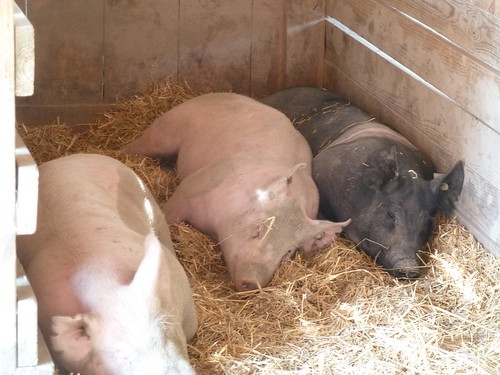


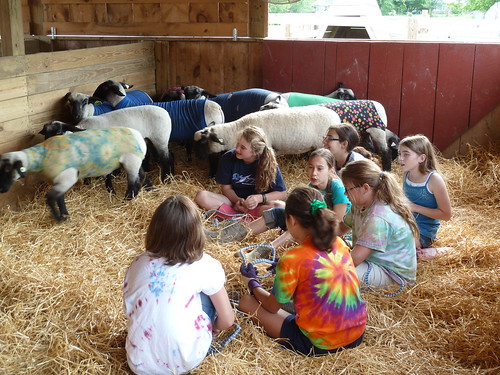




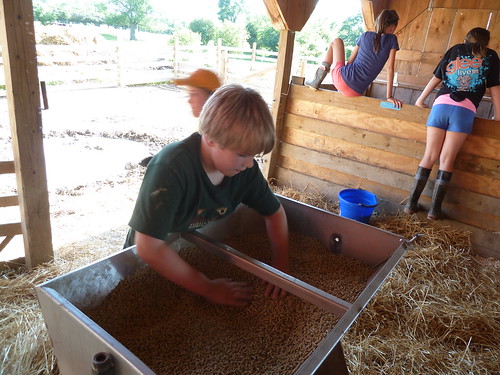

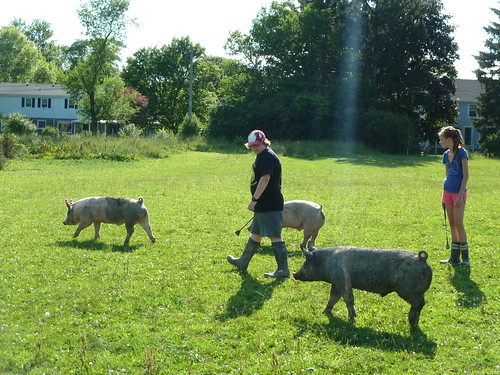
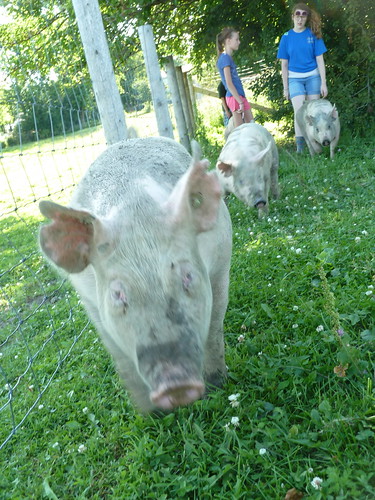

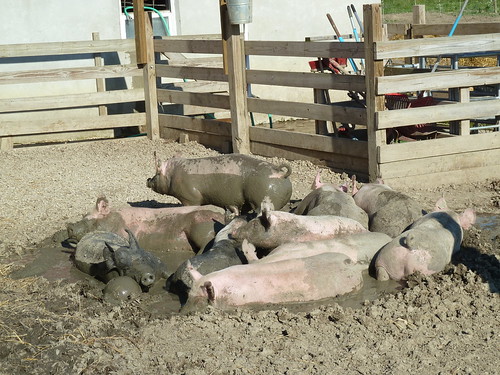










 Posted in
Posted in 
